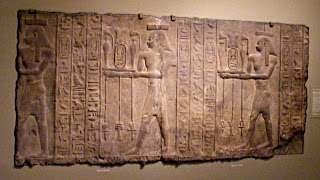With photographs.
Visitors to Alexandria are usually surprised by two features: the extent to which the city contributed to and shaped the Mediterranean world, and the complete lack of physical evidence that demonstrates that role.
This is, after all, the city that hosted the renowned Library of Alexandria in the last three centuries bce and could boast such resident scholars as Euclid, Ptolemy and Eratosthenes, the city where the Pharos lighthouse, one of the ancient Seven Wonders, guided vessels from all over the known world to her prosperous port. Alexander the Great founded the city in 331 bce. And Mark Anthony, Cleopatra, Julius Caesar and the woman mathematician Hypatia, all, for part of their lives at least, contributed to Alexandria's development into a metropolis with a backdrop of magnificent palaces, temples and public edifices decorated with luxuries from Europe, Africa and the East. Such was the Alexandria's prestige that Diodorus Siculus, in the first century bce, described her as “the first city of the civilized world.”
Alexandria was vulnerable to attack by the Byzantine fleet, so ‘Umar ibn al-Khattab relocated up the Nile and founded what would later become Cairo.Yet aside from the outline of the impressive new Bibliotheca Alexandrina, successor in 2002 to the city's great library, or the 15th-century fort that guards the harbor entrance, modern Alexandria's panorama gives no clue she was once the center of commerce and culture in Egypt, let alone the Mediterranean. Fast-paced building projects and earthquakes have made archeology only a partial, often clouded, window on the city's past. As a result, great emphasis is placed on the written record, with which, fortunately, ancient Alexandria is amply blessed. Travelers, geographers and historians documented the city's topography, her array of impressive buildings, her mixed population and her political structure, giving voice to a past city that has otherwise virtually disappeared.











